Two species of lemmings are found on Bylot Island: the brown lemming, which is the most abundant, and the collared lemming. The brown lemming is typically found in wetlands where it feeds on plants such as sedges, grasses, mosses and shrubs. In contrast, the collared lemming prefers a dryer habitat (uplands) where it mainly feeds on grasses, forbs and shrubs. Both lemming species found on Bylot Island play major ecological roles in the terrestrial ecosystem. They are the prey of many arctic predators such as the arctic fox, ermines, the rough-legged hawk, the peregrine falcon, the glaucous gull, the long-tailed jaeger and the snowy owl.
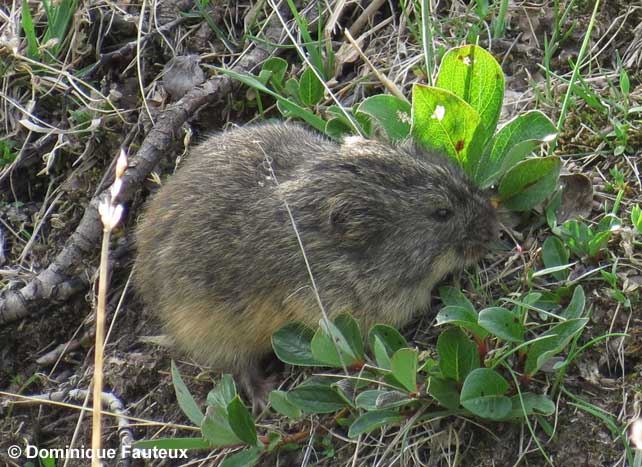 |
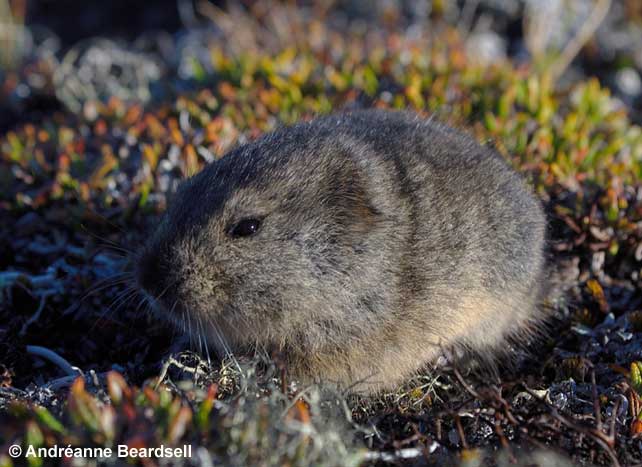 |
|
| Brown lemming | Collared lemming |
A particular characteristic of these two lemming species is the cyclic nature of their populations. This means that the brown and collared lemming populations go through regular phases of very low to very high densities. On Bylot Island, 3 to 4 years can pass between two peaks in the lemming population which has a large impact on the reproduction of their main predators. Many factors such as predation, food availability, parasites, snow condition and stress have been listed as possible factors affecting the population cycles of lemmings. On Bylot Island, predation seems to play an important role in both their summer and winter abundances. Predator species that depend exclusively on lemmings as a food source (specialists such as snowy owls, long-tailed jaegers and ermines) are absent from the island when lemmings are very scarce. On the other hand, predator species that can rely on other food sources (generalists such as foxes, hawks and gulls) are still present during those years but in lower numbers and with a lower reproduction success. When lemming populations are at their highest levels, the tundra is buzzing with a greater variety of species that are positively affected directly or indirectly by the abundance of these small mammals. Indeed, most species reproduce better when lemmings are abundant, including non-predator species such as the greater snow goose, the Lapland longspur and shorebirds.
We have been monitoring the summer abundance of lemmings on Bylot Island since 1994 through snap-trapping census. Since 2004, we also monitor their seasonal and annual variations in abundance, reproductive activity, and survival using a sampling program based on live trapping (capture-mark-recapture) to improve our knowledge of their population dynamics.
 |
| Live trap use to monitor the abundance of lemmings on Bylot Island. |
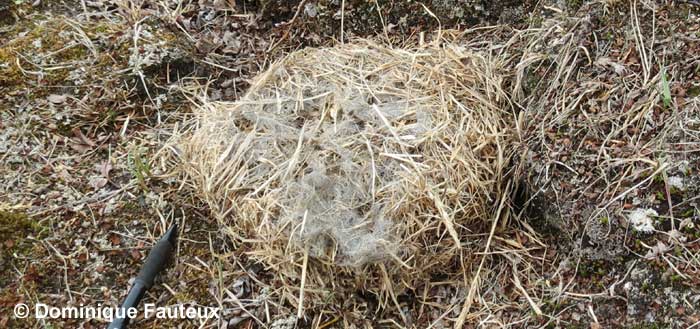
Lemmings can produce many large litters every year, including during the winter months. At that time, they build nests made from dead forbs, ericaceous shrubs and herbs to keep their litter warm under the snow. These nests are abandoned when spring arrive and are very useful to monitor the winter abundance as well as the reproduction of lemmings on the island. Moreover, we can also find remains of lemmings in these nests, indicating predation. This survey was initiated in 2007 and by combining their winter and summer densities, our data show that population crashes mainly occur during the summer and autumn months while population peaks are initiated during the cold season when predation is lower, allowing lemmings to reproduce and multiply under the snow.
Bylot Island is one of the field sites where Arctic rodents are monitored in North America as part of the Terrestrial Monitoring Plan of the Circumpolar Biodiversity Monitoring Programme (CBMP). To learn more about our field methods, please refer to our technical manual on small mammals. The full dataset of our lemming monitoring on Bylot Island is also available on Nordicana D.
Lemmings survive the harsh Arctic winter under the snow
Before the onset of winter, most birds leave Bylot Island to migrate further south to warmer climates. However, terrestrial mammals, such as polar bears, arctic foxes, arctic hares, ermines and lemmings, have developed special adaptations that allow them to stay active and survive in extremely cold environments. In the Arctic, snow typically covers the ground from October to June and represents a challenge for some species to access their food but is also the salvation for others. In the case of lemmings, they dig tunnels in the snow to avoid predators, access their food (vegetation) at the ground level and build nests in which they can reproduce if conditions are good. The snowpack also acts as a shelter against the harsh winter conditions because snow temperature near the ground are warmer than the snow temperature near the surface of the snowpack. However, poor snow conditions such as a hard basal layer due to rain-on-snow events can make digging very difficult for lemmings but also prevent them from accessing the vegetation encased in ice. Hence, it has been suggested that hard snow conditions could negatively affect lemming populations during the winter.
Since 2017, we have been studying the position and length of tunnels dug by lemmings in relation to snow physical properties to better understand how the snow affect their movements during winter. We locate lemming tunnels by digging through the snow at sites of arctic fox attacks on lemmings. Lemming tunnels are found just below a hard snow layer, in the softest layer known as the soft depth hoar layer (also known as ‘sugar snow’ or ‘pukaya’ in Inuktitut). This layer is not always found at the bottom of the snowpack, at ground level, but lemmings choose this layer of low-density snow, potentially to decrease their energy expenditure. The fact that they dig right under a hard snow layer might prevent their tunnels from collapsing, enabling lemmings to reuse the same tunnels throughout the winter. Saving energy during the harsh arctic winter is critical because it can improve their survival and reproductive success.
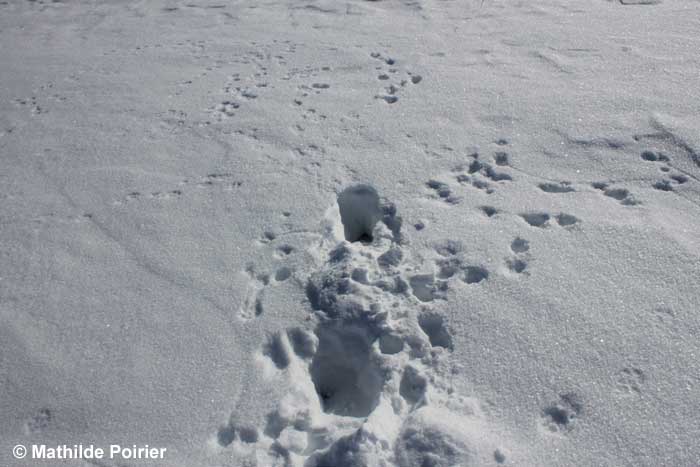 |
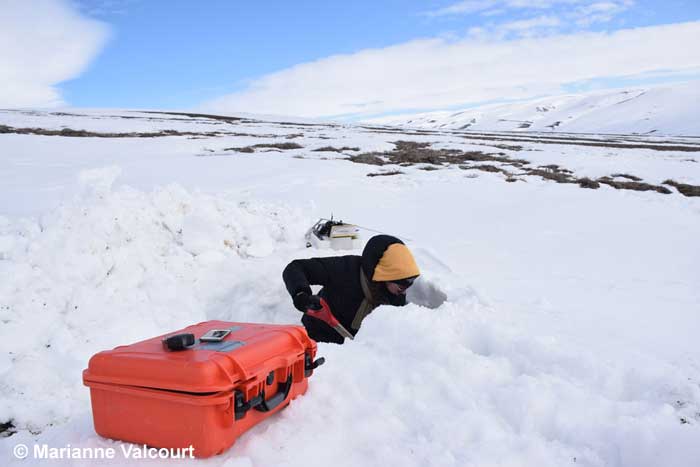 |
|
| Site of a fox attack on a lemming hidden under the snow. | Researcher digging a snow pit. |
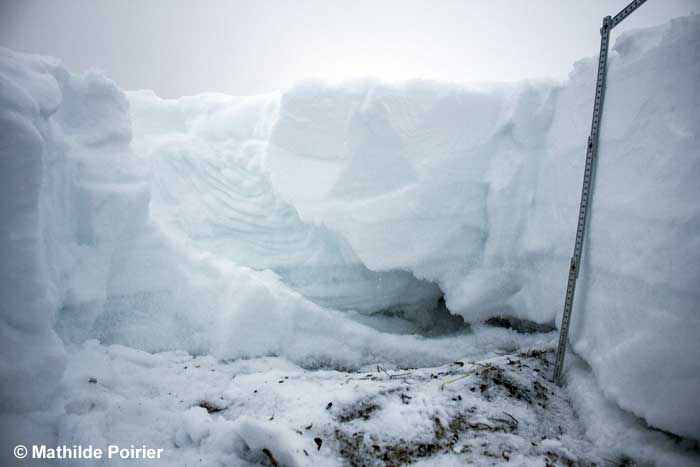 |
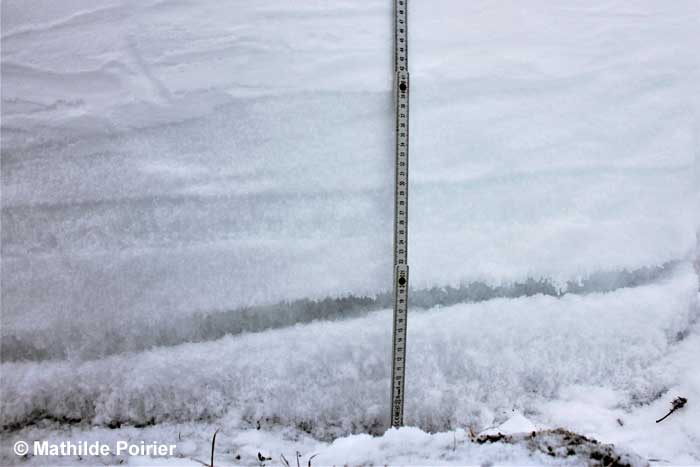 |
|
| Snow pit showing how far a fox is willing to go to get its prey. | Lemming tunnel under the snow. |
| Arctic fox | Snowy owl |
